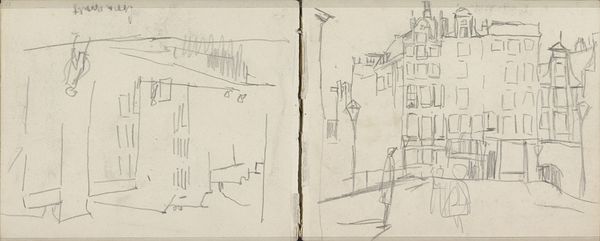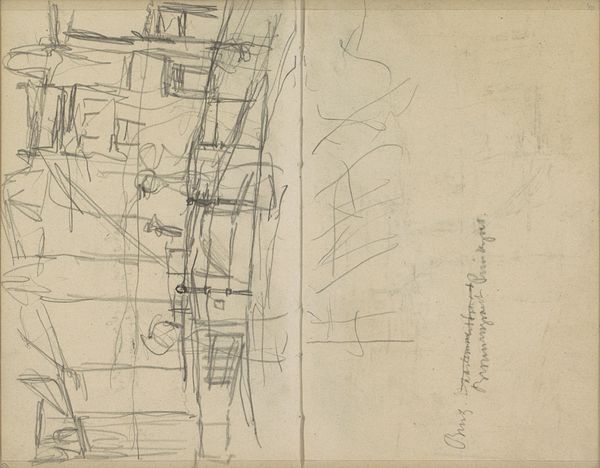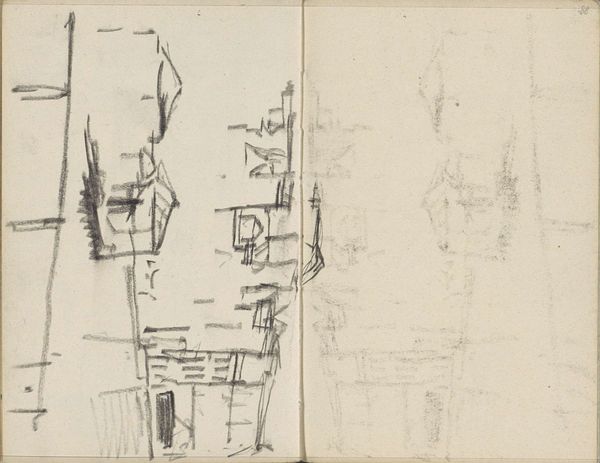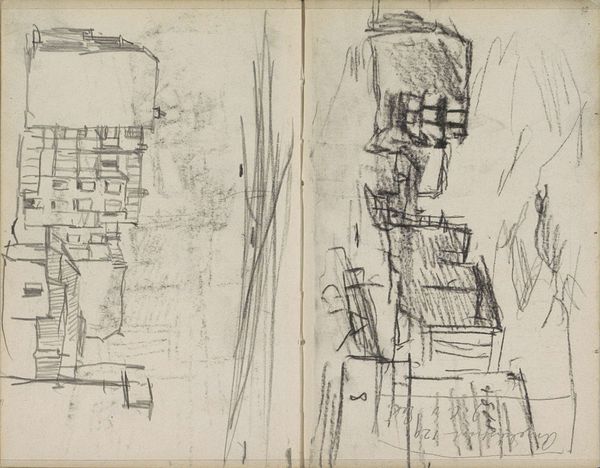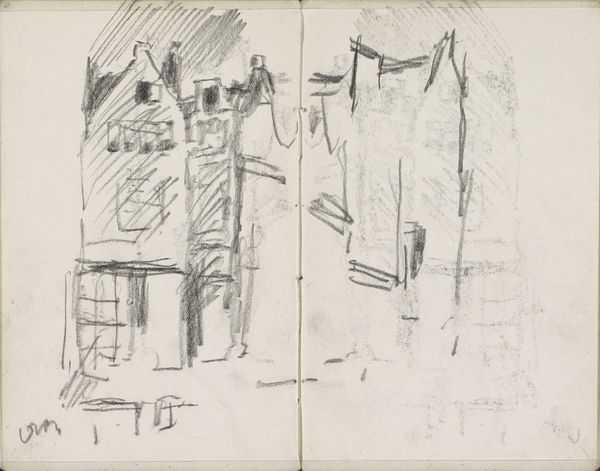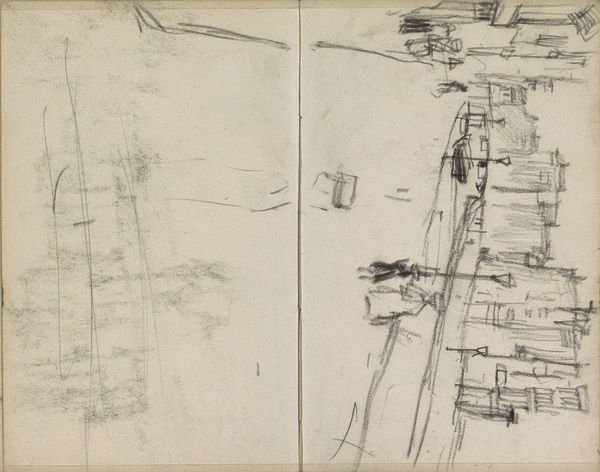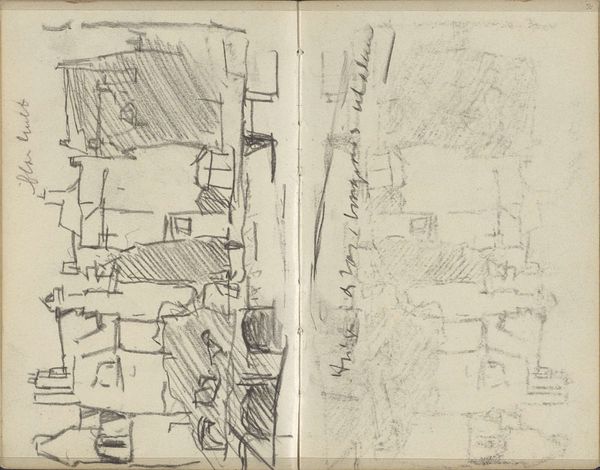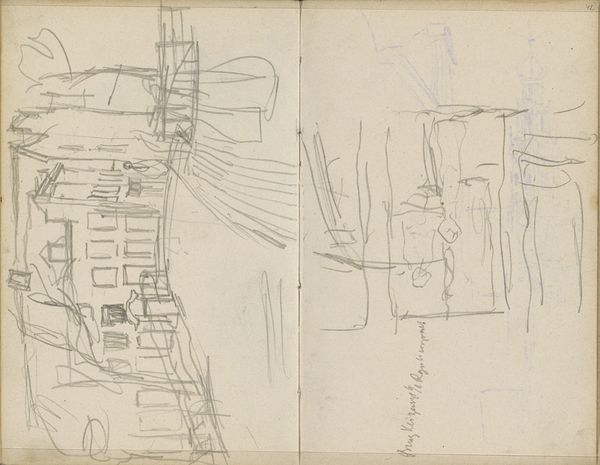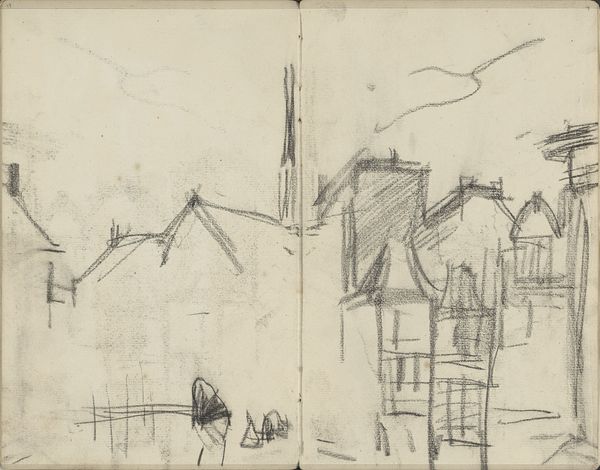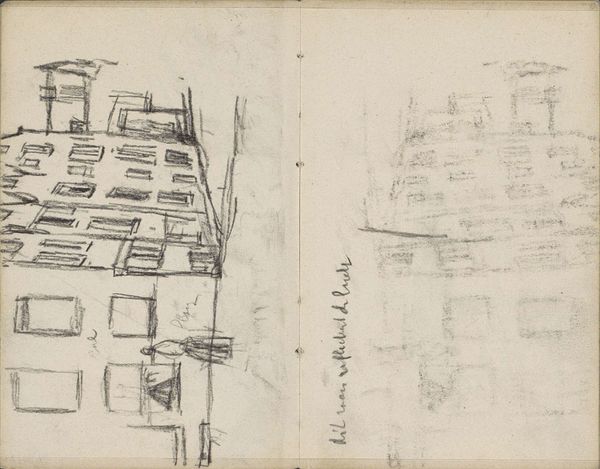
drawing, pencil
#
drawing
#
impressionism
#
pencil
#
cityscape
Copyright: Rijks Museum: Open Domain
Curator: Welcome to the Rijksmuseum. We're standing before George Hendrik Breitner's drawing, "Gezicht op het Rembrandtplein te Amsterdam," dating from around 1883 to 1885. It’s a pencil drawing. Editor: My first impression is of a city holding its breath. The sketch is raw, the buildings skeletal. There’s an air of quietude. Curator: Indeed. Breitner, known for his cityscapes, captures the essence of Amsterdam with an almost brutal honesty. Observe the linearity of the architectural forms—the sketch privileges a structured perspective. Note how he uses hatched marks, as if spontaneously documenting the visual structure and built texture of the place. The interplay between the vertical and horizontal lines creates depth within what is, on its surface, a fleeting record. Editor: It makes me think of old photographs. Not just any photographs, though – images where people's faces show a certain hardness, a reflection of the social landscape. Rembrandtplein itself, as a space, has always been laden with layers of meaning, of encounters. It acts as a stage. I also see suggestions of human activity near the left corner, lending it narrative possibilities. Curator: The suggestion of narrative here stems, I would argue, more from the artist's calculated application of marks than any true anecdotal intention. While Breitner moved within Impressionist circles, there's an underlying realism to the drawing—a structured arrangement prioritizing geometrical volumes over merely capturing the "impression" of a scene. The tonal values contribute to an exploration of solid, visual arrangements, almost a study in form and recession. Editor: But surely the choice of Rembrandtplein wasn't arbitrary? Breitner was aware that placing it centrally would automatically resonate with a specific demographic and create connotations of national artistic identity and civic space, and generate an engagement with history beyond surface-level optical effects. It makes it an open window for anyone trying to decipher not only its formal qualities, but also the memory attached to public spaces. Curator: It’s undeniable that spatial choices matter. But his mark-making is what remains resonant—it is how Breitner orchestrates space with such simple means that we begin to truly read his vision. Editor: Well, I can definitely say I walk away pondering what the people frequenting the square carried within them at that precise historical moment, now crystallized within Breitner's vision of Amsterdam. Curator: A pencil, paper, and a whole world captured through economical line work; what more can one ask of art?
Comments
No comments
Be the first to comment and join the conversation on the ultimate creative platform.
